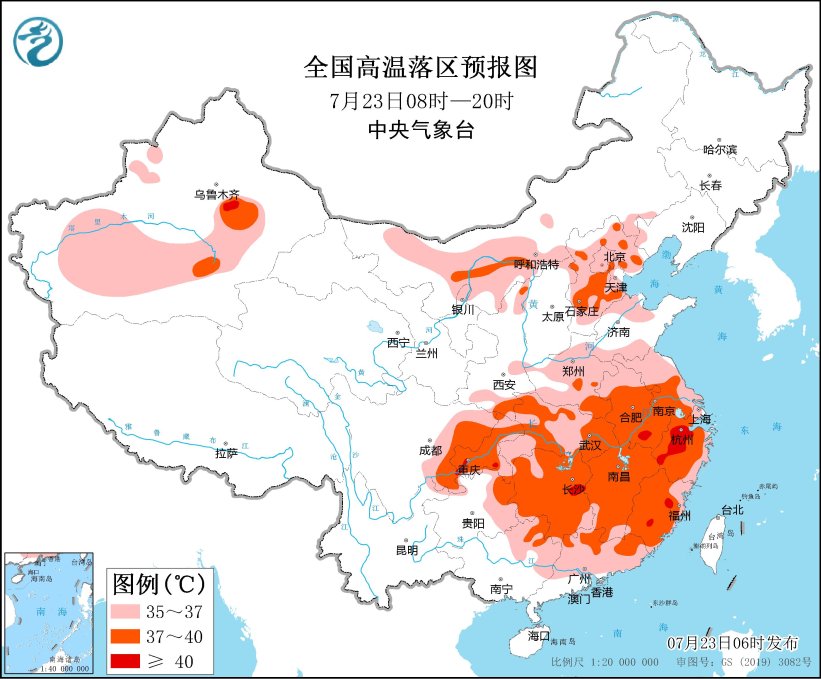China’s National Meteorological Center (NMC) issued an orange alert on Tuesday, warning of extremely high temperatures that could exceed 40°C in certain regions. The alert covers parts of Southwest China’s Chongqing Municipality, East China’s Zhejiang, Anhui, and Fujian Provinces, and the Turpan Basin in Northwest China’s Xinjiang Uygur Autonomous Region.
In addition to these areas, Beijing and regions including North China’s Tianjin Municipality and Hebei Province, as well as central and western parts of the Huanghuai region, are experiencing temperatures over 35°C. In some areas, particularly the central and eastern parts of the Sichuan Basin and Chongqing, temperatures are expected to range between 37°C and 39°C.
The NMC has urged official bodies to implement measures to prevent heat stroke, advising the public to avoid outdoor activities during peak temperatures. Those working in hot conditions should reduce their continuous working hours to minimize the risk of heat-related illnesses.
Special guidance is being recommended for vulnerable groups, including the elderly, the weak, sick individuals, and young children, to prevent heat-related conditions. Authorities and organizations are also advised to take precautions against fires, which can be triggered by high electricity consumption and the resulting excessive load on power infrastructure such as transformers and power lines.
According to recent media reports, Shanghai Pudong Hospital has already treated 23 patients suffering from heat stroke since early July, with most patients aged between 40 and 70. Some were found unconscious and unresponsive after prolonged outdoor exposure to high temperatures, with body temperatures reaching 42°C or higher.
Wang Zhihua, Chief of the Emergency Intensive Care Unit at Shanghai Pudong Hospital, emphasized the importance of heat stroke prevention, especially for outdoor workers, the elderly, children, pregnant women, and patients with cerebrovascular diseases. The public should be vigilant for symptoms of heat stroke, including excessive sweating, thirst, dizziness, blurred vision, chest tightness, palpitations, nausea, and a body temperature that is normal or slightly elevated.

